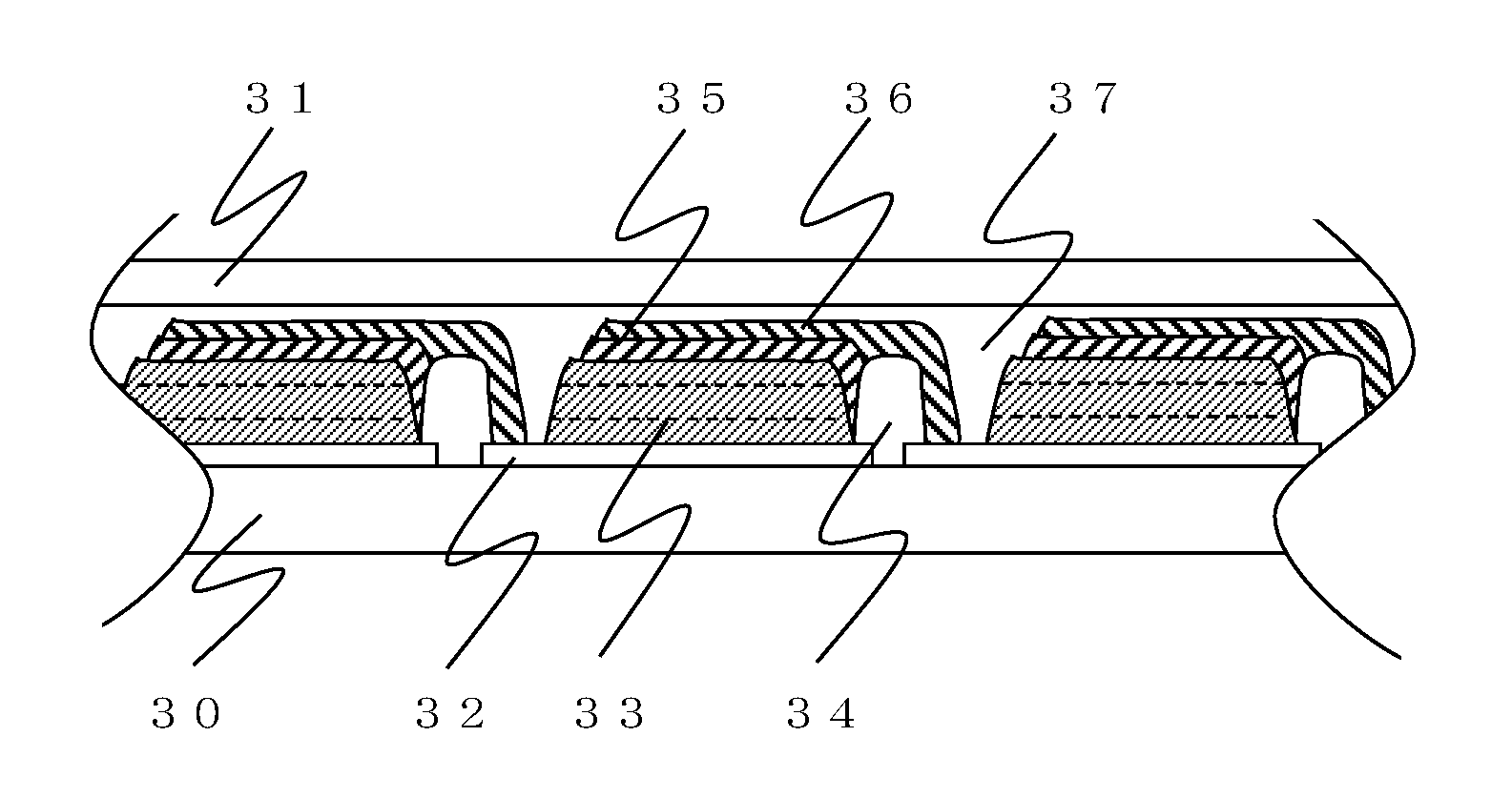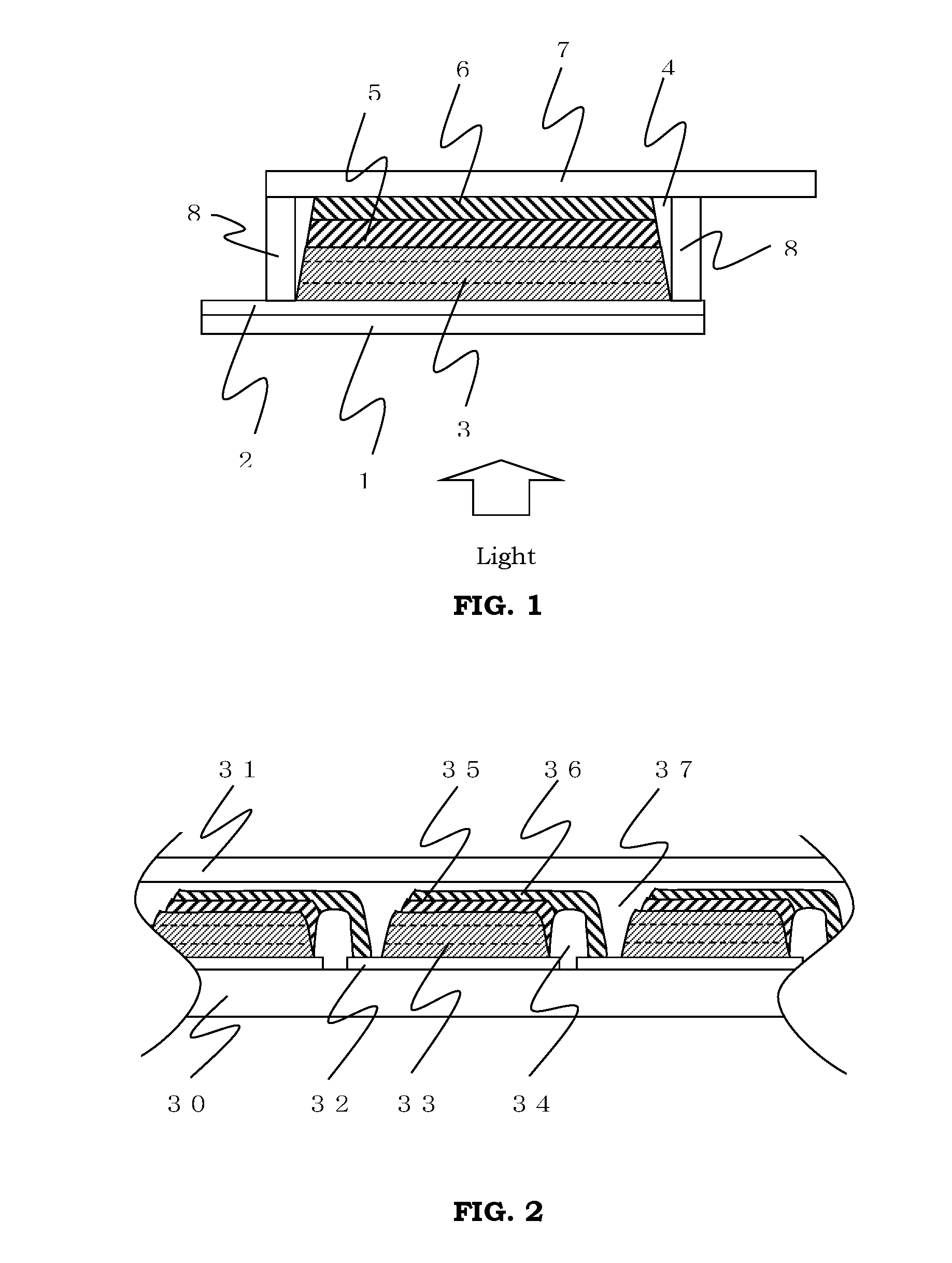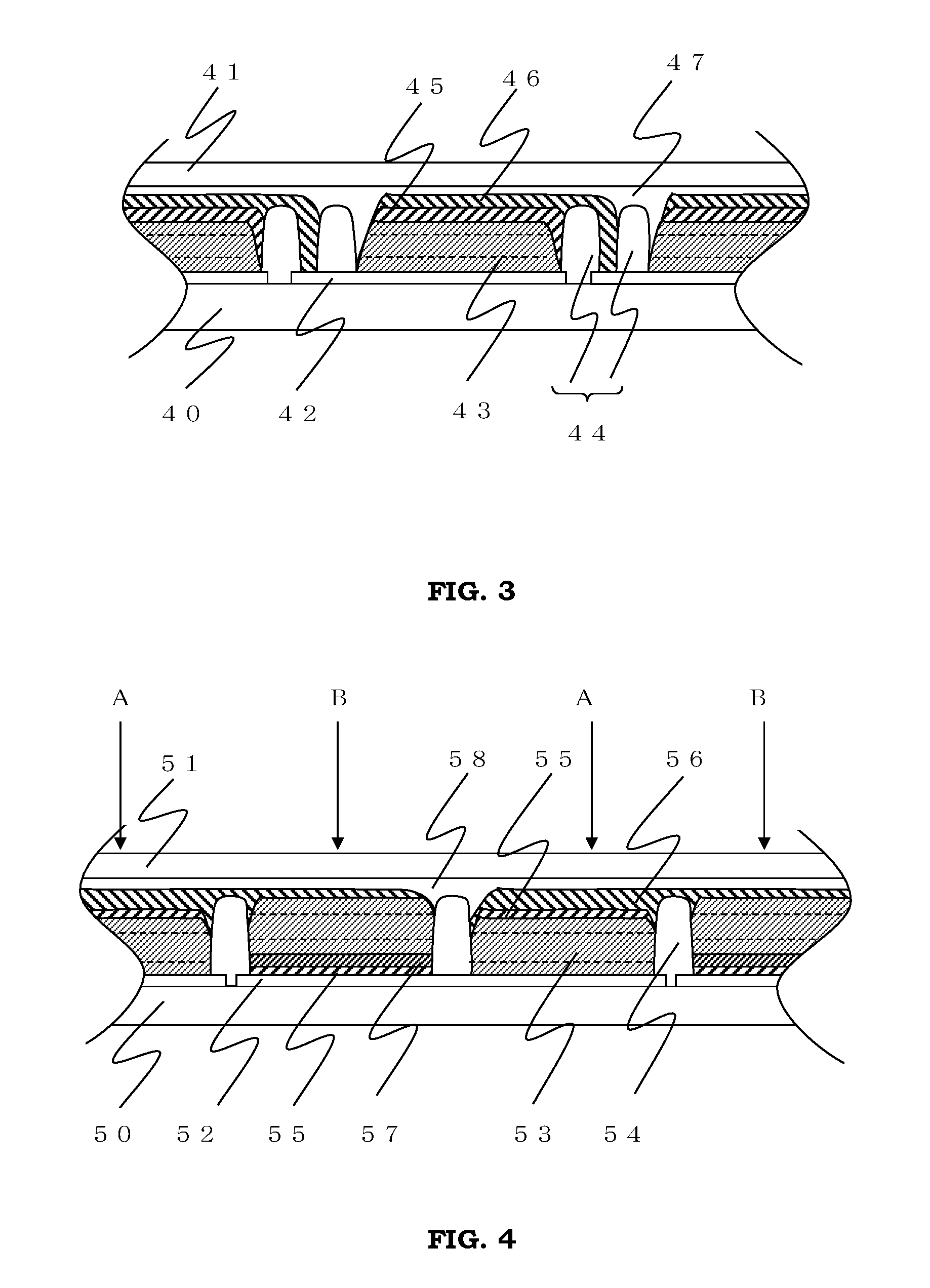Dye-sensitized solar cell and method for manufacturing thereof
a solar cell and dye sensitization technology, applied in the manufacture of electrolytic capacitors, cell components, cell component details, etc., can solve the problems of high production cost of silicon substrates, unsolved above-mentioned problems, and increase production costs, so as to improve ff, enhance short-circuit current, and high performance
- Summary
- Abstract
- Description
- Claims
- Application Information
AI Technical Summary
Benefits of technology
Problems solved by technology
Method used
Image
Examples
production example 1
[0172]A solar cell (unit cell) shown in FIG. 1 was produced.
[0173]FIG. 1 is a schematic cross-sectional view of a main part showing the layer structure of a solar cell of the present invention.
[0174]In FIG. 1, a reference numeral 1 denotes a support: a reference numeral 2 denotes a conductive layer: a reference numeral 3 denotes a photoelectric conversion layer filled with a carrier transporting material: a reference numeral 4 denotes a carrier transporting material: a reference numeral 5 denotes a catalyst layer: a reference numeral 6 denotes a counter electrode conductive layer: a reference numeral 7 denotes an output electrode: and a reference numeral 8 denotes a sealing material.
[0175]A glass substrate (trade name: SnO2 film-bearing glass, manufactured by Nippon Sheet Glass Co., Ltd.) obtained by forming a conductive layer 2 of a SnO2 film on a glass support 1 was used. A commercialized titanium oxide paste (trade name: Ti-Nanoxide T / SP, average primary particle diameter of tita...
production example 2
[0187]A solar cell module shown in FIG. 2 was produced.
[0188]FIG. 2 is a schematic cross-sectional view of a main part showing a layer structure of a solar cell module of the present invention. In the drawing, a reference numeral 30 denotes a support: a reference numeral 31 denotes a cover: a reference numeral 32 denotes a conductive layer: a reference numeral 33 denotes a photoelectric conversion layer filled with a carrier transporting material: a reference numeral 34 denotes an inter-cell insulating layer: a reference numeral 35 denotes a catalyst layer: a reference numeral 36 denotes a counter electrode conductive layer: and a reference numeral 37 denotes an insulating layer.
[0189]A glass substrate (trade name: SnO2 film-bearing glass, manufactured by Nippon Sheet Glass Co., Ltd.) obtained by forming a conductive layer 32 of a SnO2 film on a glass support 1 was used. A scribe line was formed in a prescribed site of the conductive layer 32 of the glass substrate by radiating lase...
production example 3
[0193]A solar cell module shown in FIG. 3 was produced.
[0194]FIG. 3 is a schematic cross-sectional view of a main part showing a layer structure of a solar cell module of the present invention. In the drawing, a reference numeral 40 denotes a support: a reference numeral 41 denotes a cover: a reference numeral 42 denotes a conductive layer: a reference numeral 43 denotes a photoelectric conversion layer filled with a carrier transporting material: a reference numeral 44 denotes an inter-cell insulating layer: a reference numeral 45 denotes a catalyst layer: a reference numeral 46 denotes a counter electrode conductive layer: and a reference numeral 47 denotes an insulating layer.
[0195]A solar cell module was completed in the same manner as in Production Example 2, except that after the porous semiconductor layers were formed, two rows of the inter-cell insulating layers 44 were formed an thereafter, the counter electrode conductive layer 46 was formed between the inter-cell insulati...
PUM
| Property | Measurement | Unit |
|---|---|---|
| particle diameter | aaaaa | aaaaa |
| particle diameter | aaaaa | aaaaa |
| particle diameter | aaaaa | aaaaa |
Abstract
Description
Claims
Application Information
 Login to View More
Login to View More - R&D
- Intellectual Property
- Life Sciences
- Materials
- Tech Scout
- Unparalleled Data Quality
- Higher Quality Content
- 60% Fewer Hallucinations
Browse by: Latest US Patents, China's latest patents, Technical Efficacy Thesaurus, Application Domain, Technology Topic, Popular Technical Reports.
© 2025 PatSnap. All rights reserved.Legal|Privacy policy|Modern Slavery Act Transparency Statement|Sitemap|About US| Contact US: help@patsnap.com



